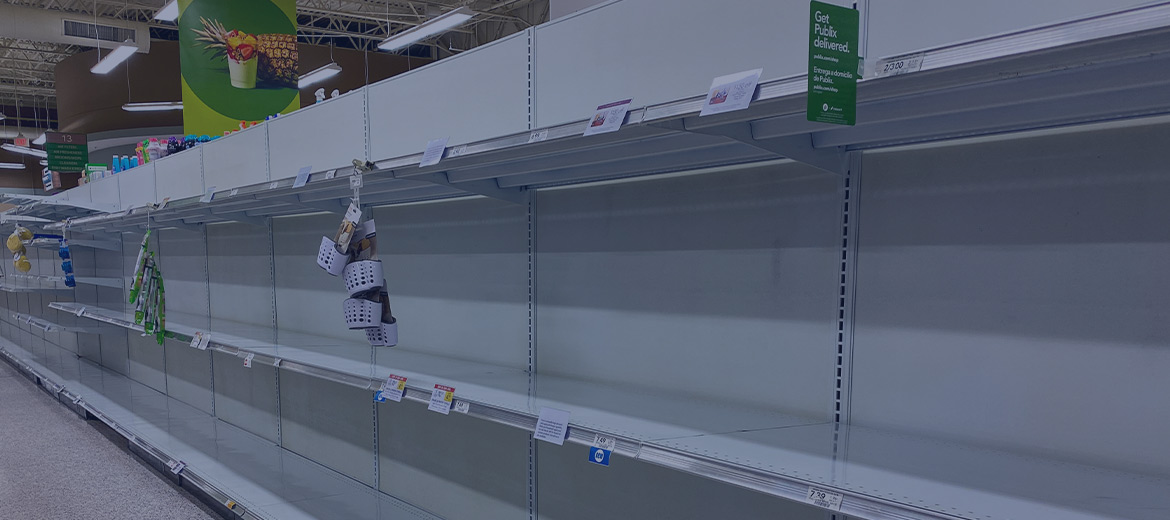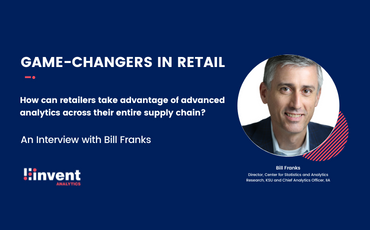
How to Deal with Inventory Shortages: 4 Tips for Retailers
Covid-19 disrupted many of the long-established norms of the retail world. And now, the supply chain crisis in the U.S. is challenging retailers to meet ever-increasing consumer demand with a limited inventory.
Experts anticipate that record inventory shortages will last through the holidays and even beyond as we are looking at significant delays. But customer demand over the holidays will likely be strong and increasingly omnichannel. This year, holiday spending is expected to shatter the previous records. According to the National Retail Federation, holiday sales are expected to increase between 8.5 percent to 10.5 percent over 2020.
Retailers need to make significant changes to how they deal with limited stock availability, unhappy customers, and stressed planning teams ahead of the jolly season.
Retailers that leverage AI and advanced analytics and improve their supply chain visibility can predict seasonal and future customer demand and forecast volumes. They can also optimize inventory levels, identify product substitutes, and simulate the outcomes of potential responses to various scenarios.
Successful inventory optimization is needed more than ever
The road ahead feels uncertain. But one thing is clear; in 2021 and beyond, successful inventory planning and optimization is needed more than ever. And retailers need to continue to adapt as the situation progresses.
There is no silver bullet solution to the current global supply chain and inventory issues. But the fact is that there hasn’t been a better time to take a step back to rethink and reinvent inventory planning operations.
This article covers 4 practical tips for retailers to deal with inventory shortages in the best way possible.
So, let’s dive in.
1. Perform supplier segmentation
“Increase value for your supply chain”
Becoming a future-ready retailer is all about being agile and responsive. It is a journey that often requires a company to rethink every aspect of its supply chain operations. And performing supplier segmentation is the beginning of this journey.
Performing supplier segmentation helps to reduce supply risk and ensures efficient supply availability.
By defining which vendors are strategic, important, and tactical, and segmenting them dynamically, you can gain valuable insights into their supply chain. You can also balance demand and supply earlier on and plan ahead of the high-demand seasons more strategically.
2. AI-powered demand forecasting is the right thing to push now
“Forecast better”
Forecasting is extremely hard in today’s challenging environment but getting the forecasts as accurate as possible is essential. Plus, accurately estimating customer demand to deal with the changing consumer trends is critical to optimizing inventory.
Many demand forecasting systems on the market look at historical buying patterns. They take account of environmental and social factors, such as weather or special days. These systems have become the classical method.
To stay ahead, demand forecasting must take a multi-dimensional approach. It needs to predict your customers’ preferences for trying, buying, receiving, and returning goods during the holiday season. And that requires more granular analytics combined with probabilistic forecasting techniques.
By taking advantage of advanced analytics and explainable AI, you can forecast your customers’ behaviors at the same granularity that they make choices. You can generate more accurate long-term forecasts using a probabilistic demand forecasting system. With better insights into true consumer demand, you can improve your inventory availability, increase turnover and enhance customer experience.
Assess your demand forecasting system. See if it gives you highly accurate forecasts at all levels of granularity in your demand planning today and tomorrow. Forecast better and improve your inventory management.
3. Accelerate your replenishment capabilities
“Upgrade your inventory decisions, offer stock-out substitution”
In the old world of retail, replenishment solutions with the service-level frameworks were very common.
But this is 2021.
And now, things are more complicated. Old-fashioned replenishment systems can no longer help you manage the complexity of the retail world, where you also need to deal with record shortages.
Also, it should come as no surprise to anyone that out-of-stocks are a critical problem for every retailer during the holiday season. Out-of-stocks lead to lost sales and subsequently margin loss. But the problem carries longer costs, too: Unhappy customers, lost customers, even lost retail brand reputation.
So, what should you do?
It’s time to upgrade inventory decisions from a judgment-driven approach to a financial-optimization-driven and measured process.
Review your replenishment tools. See if you can see the potential impact of future decisions through what-if analysis and simulations. Find out if you can adapt quickly to demand shifts.
Take a look at your capabilities in identifying and replenishing stock-out substitutions. Can you offer your customer the best alternative in case the item they are looking for is out-of-stock?
Are you using AI-driven demand forecasting as the backbone of your replenishment system? Can you plan for peak demand or decreasing inventory demand situations? And lastly, can you determine the optimal reorder points and quantities by taking into account changing demand patterns and supply chain constraints?
Optimize your replenishment. Offer stock-out substitution, if you don’t have the right replenishment tools to do that, allocate better. And lastly, make sure your replenishment process is efficient and up-to-date.
4. Get allocation right
"Strong allocation is needed now more than ever"
Most retailers assume they sell out everything when inventory is scarce, and therefore, allocation is less important. But it’s actually the other way around.
In the eye of the supply chain storm, retailers can’t afford to use old-fashioned allocation models. Traditional models with rule-based approaches require more manual intervention by planners.
They lead to significant problems such as sending a slow-moving item to the wrong store where demand is not that high. Inventory shortages are a real problem, and this becomes a big reason to risk losing the sale at a time when you need them the most.
Assess the way you optimize allocation. Make sure it’s efficient and customer-centric. If not, explore robust allocation solutions that can enable you to send the right amount of inventory to the right stores. This way you can maximize your inventory productivity and reduce lost sales.
Times are not changing. They already have. What now?
Retail is a very powerful industry that has been through a lot.
Will we ever return to retail as normal? That’s a question that nobody can answer now.
Many issues related to inventory shortages and supply chain issues won’t go away overnight. But planning is the key element of a profitable supply chain. Therefore, optimizing inventory successfully must be a top priority for retailers now.
To deal with inventory shortages and achieve effective inventory optimization, retailers need innovative solutions.

At Invent Analytics, we can help you optimize your decision-making, and make your planning better with our tailor-fit, profit-optimizing inventory optimization solutions.
Get in touch with our team of experts today. Find out how you can strengthen your inventory management capabilities with our Demand Forecasting, Allocation Optimization, and Replenishment Optimization solutions.
Did you enjoy reading this? You might also be interested in reading Retailers, Are You Ready for Allocation Challenges This Christmas?





